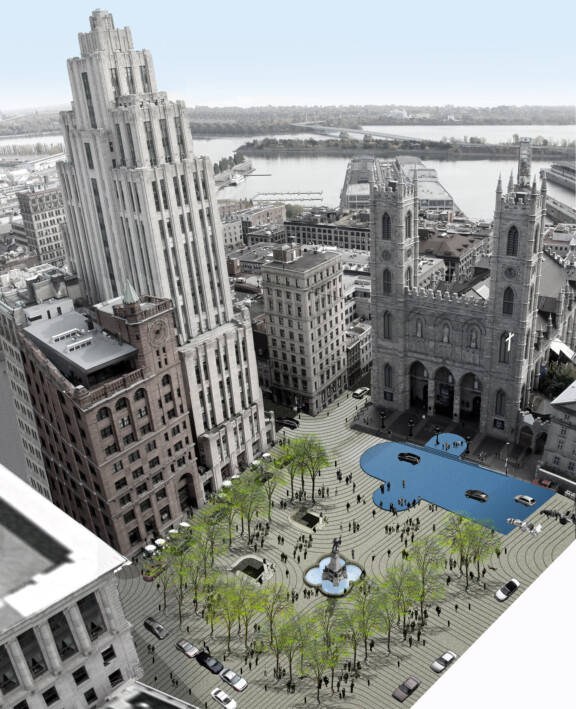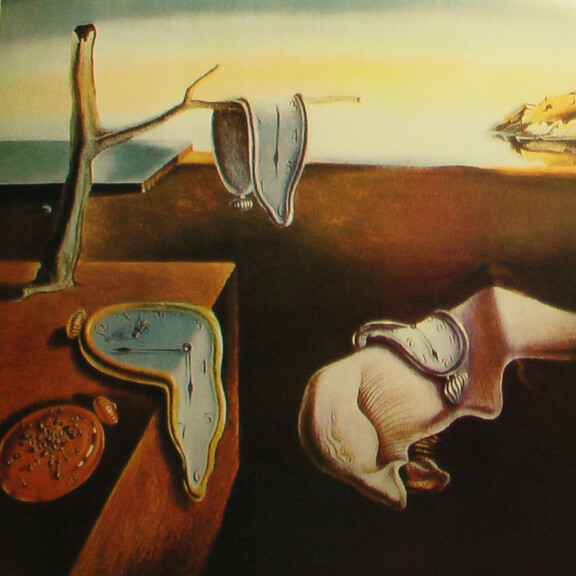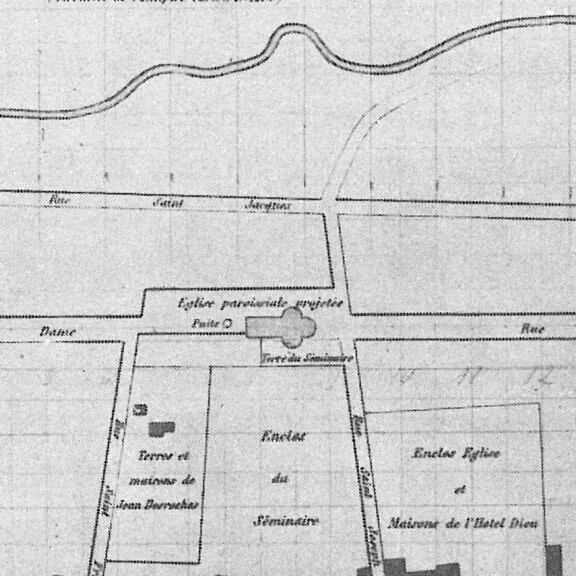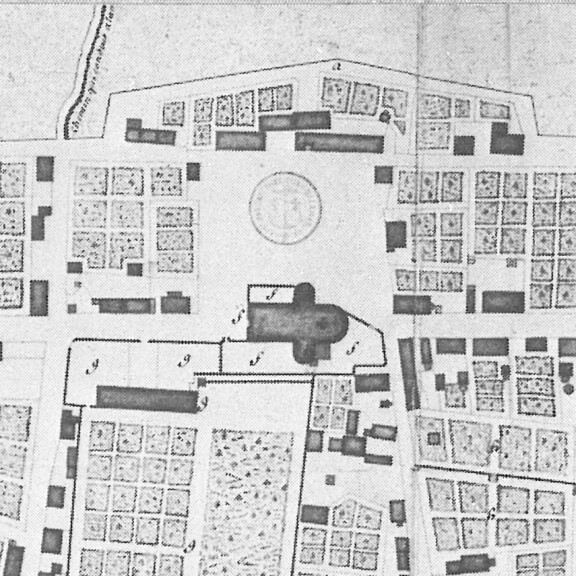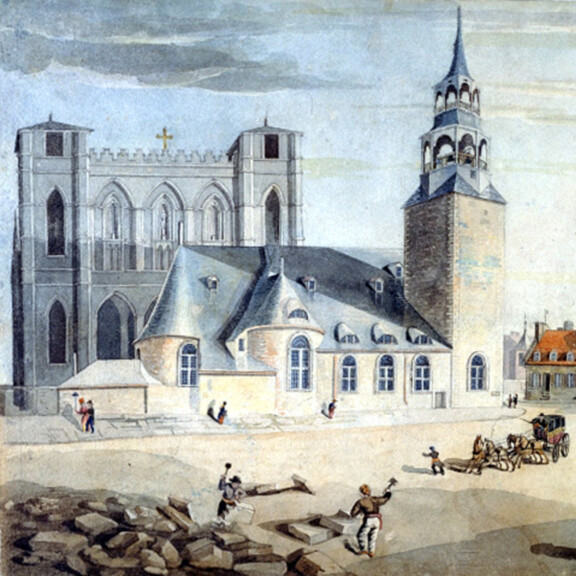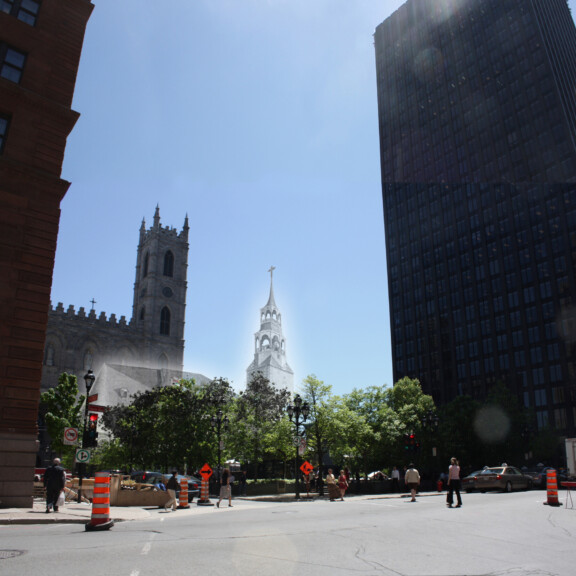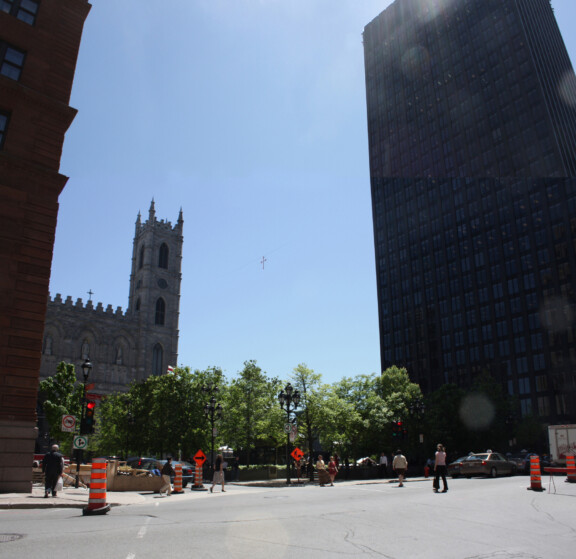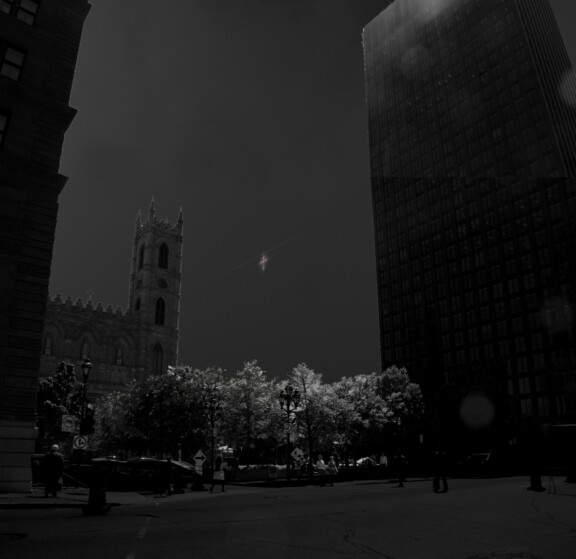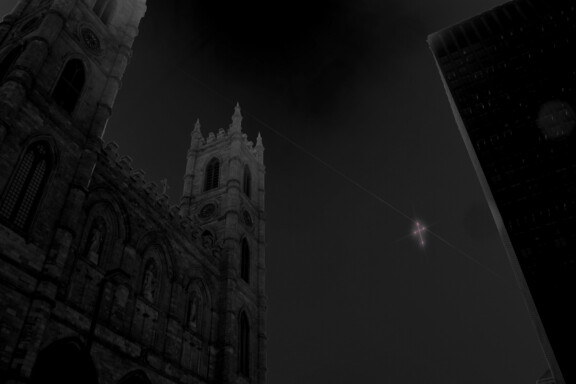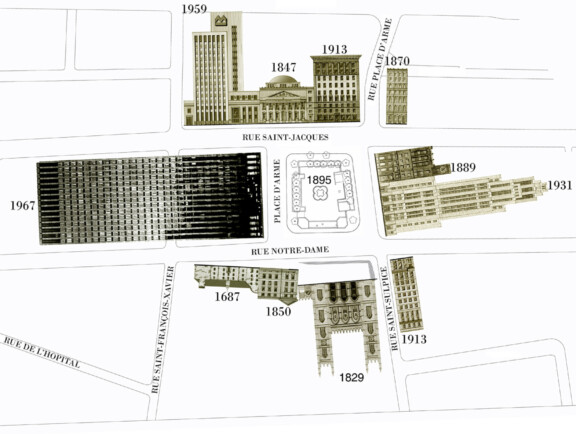Charette to reimagine the second oldest public space in Montreal
(part of 2007 UNESCO City of Design)
As the density of the contemporary American city increases, so the spaces between buildings assume an increasingly important role in fostering a sense of identity and a quality of life for the urban dweller.
One of Montreal’s oldest public places, Place d’Armes is the first square in the city to achieve the intensity of peripheral activity necessary to support the type of minimal public space one finds in historic European cities. A space that is minimal in expression and open to appropriation – a space of imagination.
The minimalism of an Italian piazza is directly related to the intense human activity of its periphery. This activity is the pageant of life in all its colors: the movement of people, the calm of architectural monuments, the cacophony of symbols, the murmur of rumors, facts, and voices, the happiness of others, the odors, the smoke, the stories, the despair of the homeless, the garbage, the passions, the excuses, the congestion of tourists, the joy, the suspicions, the sighs, the frivolous vehicles and the utilitarian vehicles.
To give form to this new space of imagination, our project unrolls a carpet to the limits of the surrounding buildings. Communicative and tactile, this surface both reveals history and creates the future. It re-establishes in one gesture the territorial scale of the original landscape and the human scale of the user.
Like objects left under a carpet, three elements, each witness to specific historic eras, affirm their physical presence and symbolic importance. The foundations of Montreal’s first church are extruded to create a prestigious drop-off for the Notre-Dame Cathedral; Paul Chomedey de Maisonneuve, father of Montreal, maintains his monumental position overseeing the city he founded; and the entry to the underground washrooms offers the promise of new social activities. Placed on the carpet like pieces of furniture are a series of objects of our time – organic street furniture, trees, bollards, and lamps.
Our project, our carpet, is above all a gesture of generosity. A gesture of generosity that should be the base of civil life and the principal function of public space.
Generous in the numerous opportunities it offers.
Generous in the spatial dimensions it creates.
Generous by its act of social inclusion.
Generous in the multiple symbols it carries.
Generous in its celebration of life.
